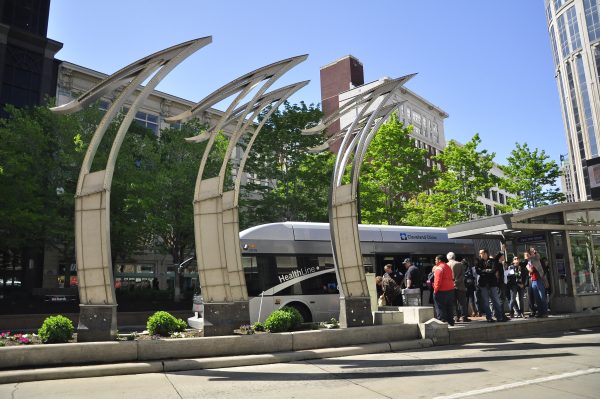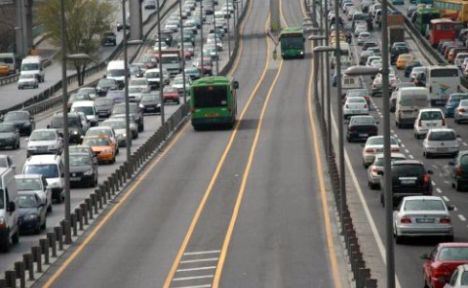To stimulate airport area, invest in west Charlotte transit

Several recent newspaper articles have described the city’s plans to subsidize a new edge city west of Charlotte Douglas International Airport by spending about $45 million to widen and extend streets in the Dixie Berryhill area.
City leaders want to build on the airport’s expansion and the new Norfolk Southern freight center at the airport in order to attract office, warehouse, factory and residential development to the area. Developer Johnny Harris and others have compared the vision to Crystal City in Arlington, Va., outside Washington.
See recent news articles |
While Crystal City – a high-density job and residential center – is a good aspirational model for Charlotte, the city’s current proposal misses the element that makes Crystal City work: mass transit.
Crystal City is a transit-oriented development based on Metro rail Blue and Yellow Line stops between D.C. and Reagan National Airport. In fact, Crystal City was redeveloped from a struggling industrial area in the 1960s to today’s high-rise urban center.
Although Dixie Berryhill presents an opportunity to attract new manufacturing employers and help diversify the region’s job market, the city will fail to see the economic multipliers this new development could bring – unless there is a high-quality transit connection to the center of the city.
The Metropolitan Transit Commission’s 2030 Transit Corridor System Plan proposes a 6.4-mile streetcar line from uptown to the airport via Wilkinson Boulevard, to be completed by 2034 at a projected cost of $324 million. Some recent research indicates that streetcars may be less efficient than local buses and better suited to economic development than to moving people. As an alternative, full bus rapid transit (BRT) can attract at least as much TOD as streetcars and light rail, and costs much less to build and operate.
The HealthLine – a BRT route in Cleveland, Ohio, that has attracted $114.54 million in transit-oriented investment per dollar of transit investment – cost $17.9 million per mile to build. Assuming comparable costs, Charlotte could build an excellent BRT line from uptown to the airport for about $115 million, or about a third of the cost of the long-term streetcar proposal. And the $45 million that the city is paying to induce greenfield development in Dixie Berryhill is almost 40 percent of the total cost for a BRT line.

As the original LYNX Blue Line from uptown south to Interstate 485 has shown, transit investments build tax revenue by attracting development, and they can reduce congestion by taking cars off the road. Charlotte already has a sprawling infrastructure network to maintain and several blighted, high-profile corridors in need of redevelopment. The city should be improving its existing infrastructure rather than stretching its resources to build new.
After seeing Atlanta’s sprawl-based paralysis during the late January snowstorm, Charlotte leaders should be taking a hard look at how Charlotte’s street network leaves the city susceptible to the same problem. Like Atlanta, Charlotte’s transportation network depends on a few, heavily traveled highway corridors, which makes traffic intractable on normal days. Without a new transit corridor, new development in Dixie Berryhill, which would rely on Interstate 85 and I-485, would only worsen traffic.
This is not to say that the Dixie Berryhill area will never develop or should never develop. Instead, it is a proposal that the city think about departing from its status quo of car-dependent, leap-frog development and double-down on the smarter approach to growth that it has taken with recent investments in the LYNX Blue and Gold Lines. A new, TOD corridor from uptown to Charlotte Douglas International Airport would better respond to the market demand for transit-accessible, walkable development and help build connections and synergy within the city.
If Charlotte is serious about attracting development around the airport, city leaders should consider a resilient, transit-based approach that offers a high return on investment and would spur redevelopment of a struggling area – just like in Crystal City.
Carolyn Reid is a planner and urban designer with The Lawrence Group in Davidson. Opinions expressed here are the author’s, not necessarily those of the UNC Charlotte Urban Institute or the University of North Carolina at Charlotte.